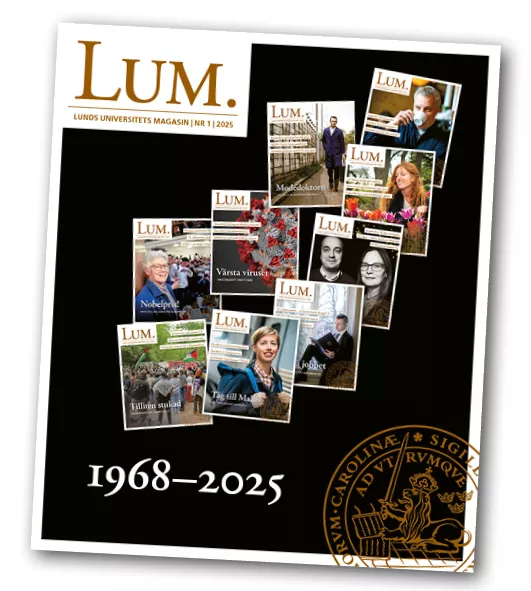The new entrance opens onto the University Square and the fountain. Behind the doors of the University’s oldest building, there’s a definite air of new and modern. You are greeted first by an exhibition about the building, a lift and a new stairwell, and the old, crooked oak staircase (that Karl XII never did ride up, despite a widespread myth to the contrary) is not immediately obvious. It is there, though, inside the tower.
New and old go hand in hand inside the lovingly restored building. On the first three floors, 42 staff members have settled in at their desks. Some in open plan offices, others in offices of their own. Vice-Chancellor Erik Renström belongs to the second category. When LUM pops into the Vice-Chancellor’s room on the third floor, it’s the day before the eve of Monsieur le President Emmanuel Macron’s visit to Lund, and the Vice-Chancellor is dusting off his schoolboy French by reading aloud from his laptop screen.
“I don’t speak French, but there’s something appealing about putting yourself out there, and I have a feeling they appreciate it. Thierry Gilles from the Centre for Languages and Literature helped me with the translation, so I think it should be fine.”
Management and staff moving into the King’s House feels like the University returning home. Starting in 1688, when the University was given the King’s House, the building was synonymous with the University itself for almost 200 years.
The University Management vacated the Main University Building in 2018, and the years spent in the temporary home of Wrangel were good, says Erik Renström. He explains that Wrangel was a more convenient location in relation to a lot of departments. At the same time, the King’s House is a building that is meant to be occupied, so moving feels right.
“I am conscientious. You can put me anywhere and I’ll work.”
Pro Vice-chancellor Per Mickwitz has settled in on the floor below.
“The best room in the King’s House,” he says, looking out across University Square, before quickly adding that everyone else feels that way about their own rooms. One detail, however, sets his room apart.
“The Vice-Chancellor sits directly above me, so if he gets upset, I can hear him stamping,” he smiles.
Alexandra Altmark, of Skissernas Museum, is one of those who helped hang artwork in the King’s House. Forty-one pieces, all modern art from the turn of the last century onwards, the overwhelming majority of which were painted by artists from Skåne, were all taken from the University’s art collection.
Which paintings were to end up adorning the walls wasn’t something that was left to chance.
“We envisioned a theme of modern art. The idea is that the art will hang there for generations to come, and suit all kinds of people. It isn’t an exhibition, it’s more like functional art,” she says.













